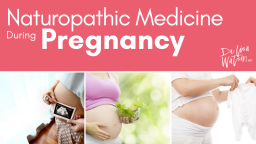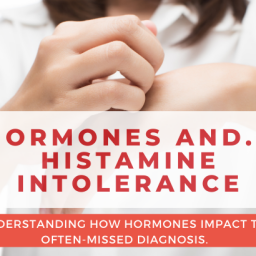
Endometriosis is a relatively common reproductive condition affecting between 10-15% of women in their teens, 20s, 30s and 40s. Endometriosis can cause significant pain and discomfort with menstrual periods and is associated with infertility in a large number of women.
This article will help you to understand the basics of endometriosis and is a great starting point to taking an empowered approach to your health care.
What is Endometriosis?
Endometriosis occurs when endometrial cells migrate and implant in areas outside the uterus. The most common sites for endometrial cells to implant are the cervix, vaginal-rectal space, ovaries, fallopian tubes, colon and bladder wall. Two out of three women with endometriosis with have implants on the ovaries – these are called endometriomas.
These rogue endometrial cells continue to respond to the hormonal stimulation of estrogen and progesterone despite their location outside of the uterus. This means that they will bleed during the monthly menstrual period. In endometriosis there is no way for this blood to leave the body, so it stagnates at the site, causing inflammation, pain and possibly scarring.
Symptoms of Endometriosis
 Some women with endometriosis have no symptoms at all – in one third of women with endometriosis the only symptom is infertility. For women who do experience symptoms the most common are:
Some women with endometriosis have no symptoms at all – in one third of women with endometriosis the only symptom is infertility. For women who do experience symptoms the most common are:
- Painful periods (can get worse with time)
- Painful intercourse
- Infertility
Other symptoms that are also associated with endometriosis include:
- Premenstrual spotting (bleeding prior to your period)
- Bleeding at other locations (including nose bleeds) during your period
- Back pain or abdominal pain during your period
- Painful digestive upset
- Pelvic pain that worsens before or during your period
- Pain with bowel movements
- Recurrent bladder infections
- Shortened menstrual cycles (<28 days), heavy menstrual flow and long periods (>7 days)
- High levels of pain can lead to exhaustion, depression and anxiety
How Do I Know If I Have Endometriosis?
Endometriosis is diagnosed based on surgical biopsy, usually performed during a procedure called a laparoscopy. Occasionally endometriosis can be seen on ultrasound, but only if the endometrial lesions are located on the ovaries. A blood test called CA-125 is often elevated in endometriosis and can be a useful screening tool as well as a way to monitor treatment.
Endometriosis and the Immune System
There are significant abnormalities in the immune function of women with endometriosis. You can read more about these changes in this article. Normalizing the function of the immune system is a key component to any treatment plan for endometriosis.
Mainstream Treatments for Endometriosis
 Treatments for endometriosis often do not address the underlying causes of endometriosis, but rather are used to manage symptoms or remove endometrial lesions, many of which recur.
Treatments for endometriosis often do not address the underlying causes of endometriosis, but rather are used to manage symptoms or remove endometrial lesions, many of which recur.
Pain-relieving medications are typically used for discomfort during periods. Non-steroidal anti-inflammatories (NSAIDs) are the most common prescription or over-the-counter medication for endometriosis. These medications are not without side effects and can negatively impact fertility with regular use.
Surgery or hormone-controlling drugs can be used to shrink or remove endometrial growths, although in approximately 40% of cases the endometriosis will recur.
Beyond Understanding
At this point you have an understanding of the symptoms and mainstream treatments of endometriosis. Continue your understanding by reading about Endometriosis and the Immune System, Endometriosis and Infertility, Endometriosis in Adolescence and learn about your options in Naturopathic Medicine in Endometriosis, Endometriosis and Acupuncture and the Endometriosis Diet, all by Dr. Lisa Watson, ND.
If you are ready for support in healing your endometriosis, Dr. Watson is currently accepting new patients. Contact her for a complimentary meet and greet appointment or book your initial appointment today.
References
Hudson, Tori. Women’s Encyclopedia of Natural Medicine. New York: McGraw Hill, 2008.
Lauersen, Niels H and Bouchez, Collette. Getting Pregnant. New York: Fireside, 2000.
Lewis, Randine. The Infertility Cure. New York: Little, Brown and Company, 2004.
Disclaimer
The advice provided in this article is for informational purposes only. It is meant to augment and not replace consultation with a licensed health care provider. Consultation with a Naturopathic Doctor or other primary care provider is recommended for anyone suffering from a health problem.

















[…] Understanding Endometriosis […]
[…] and managing this debilitating and frustrating condition. In other articles we will be looking at Understanding Endometriosis, Endometriosis and Infertility, The Endometriosis Diet, Acupuncture for Endometriosis and […]
[…] Understanding Endometriosis […]
[…] to reading this article, I suggest you check out Understanding Endometriosis to learn how to recognize the symptoms of endometriosis and the underlying imbalances that lead to […]
[…] optimizing immune function and supporting the body through the diet. You can read more about Understanding Endometriosis, Naturopathic Medicine and Endometriosis, Acupuncture and Endometriosis and the Endometriosis […]
My stepdaughter is 30, has endometriosis, and is experiencing heavy nosebleeds and headaches, with a consistently high diastolic bp reading…120/109. Is there any correlation between these symptoms?
Please help!
Nose bleeds are a known symptom of endometriosis. The hormone-responsive tissue can occur anywhere in the body – including the nasal passage. And the inflammation associated with endometriosis does leave women at a higher risk for developing high blood pressure. She should absolutely consider working with a naturopathic doctor to address the inflammation associated with her endo.
Best,
Dr. Lisa